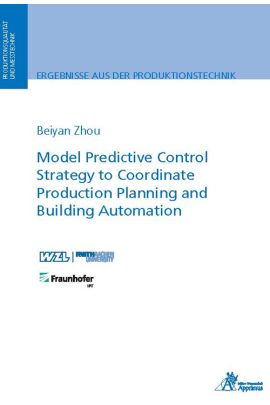The sustainable use of energy has been a central challenge for years due to its supply limit and constantly increasing demand. Therefore, a huge amount of effort has been taken to improve the energy efficiency of manufacturing activities. Various technical solutions are available from an equipment level to a system level. However, researchers still seek for additional opportunities to improve energy efficiency in production, due to its importance.
Typically, two major categories of energy consumers exist in a production company. One is production activity, which uses resources to create value-added goods. The other one is periphery facility, such as heating, ventilation, and air conditioning as well as lights. For an energy overview, it makes sense to reach energy-saving potential by considering these two categories as a whole, because they naturally pair together. Periphery facility aims at providing a suitable environment for production activity, and meanwhile, production activity has a constant impact on the environment. However, production planning that schedules and coordinates all production activities is completely isolated with building automation that is responsible to control periphery facilities.
Against this background, the goal of this dissertation is to develop a holistic model predictive control strategy through coordinating both production activity and periphery facility to reach a further improvement of energy efficiency.
This is first followed by the development of a plant model to describe the energy interaction between production and periphery. A multi-criteria cost function is determined to balance classic production objectives and energy efficiency. By transferring related system limits of production and periphery to constraints, the model predictive control strategy is established. Through predicting the total energy consumption and the resulted thermal condition, the controller calculates on the allocation of production and periphery resources automatically.
The dissertation evaluation approach is implemented in a simulation tool within MATLAB/Simulink environment. The prediction accuracy of the developed plant model is validated by comparing the simulated and measured results. Afterwards, a verification of various production scenarios demonstrates that the control strategy can conduct automatic resource allocation of production and periphery, and meanwhile, a further improvement of energy efficiency can be realized.
| Autor | Zhou, Beiyan |
|---|---|
| Gewicht | 0.276 kg |
| Erscheinungsdatum | 15.02.2022 |
Produktionsqualität und Messtechnik
Model Predictive Control Strategy to Coordinate Production Planning and Building Automation
Kurzbeschreibung
The sustainable use of energy in production has obtained significant attention for years. Most solutions neglected the energy interaction of production activity and periphery facility, which are two major energy consumer categories in production. It makes sense to consider and coordinate both with a holistic view. Thus, this work develops a holistic model predictive control strategy through allocating resources of production and periphery to reach a further energy-saving.

